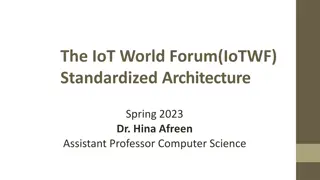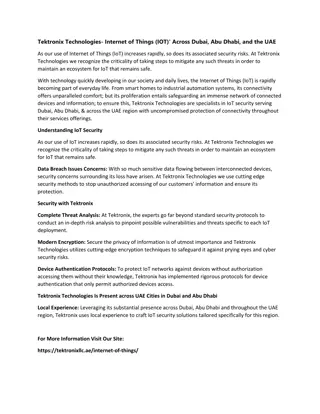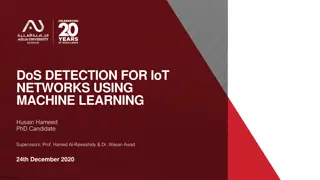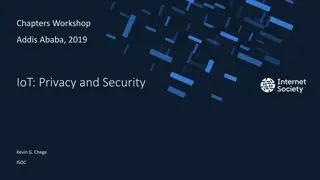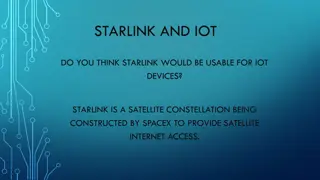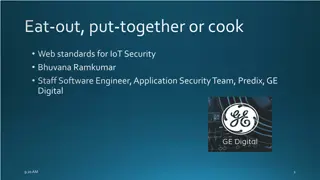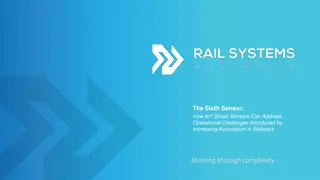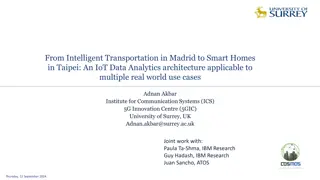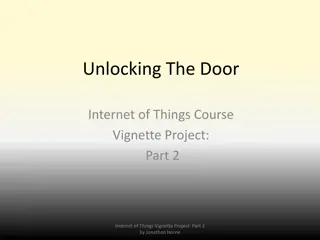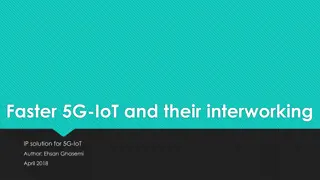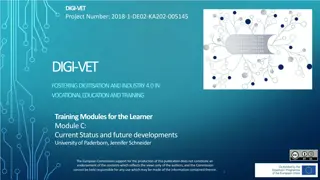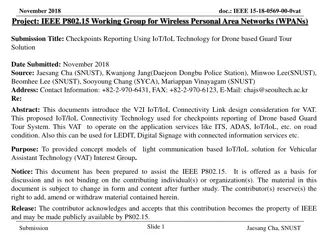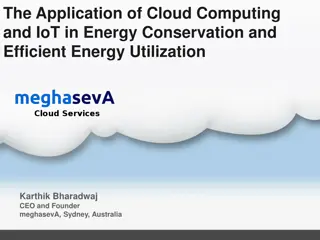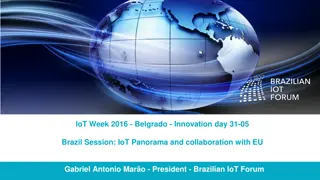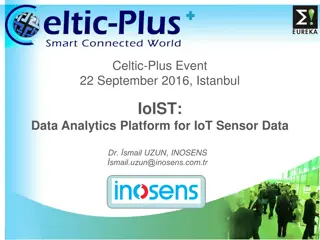
Understanding the Layers and Stages of IoT Architecture
Explore the three layers of IoT architecture - client side, operator side, and pathway for connection. Delve into the main stages: sensors, actuators, data aggregation, edge IT, and data center/cloud. Learn how networked things, data aggregation, and edge IT systems play crucial roles in the IoT framework.
Download Presentation

Please find below an Image/Link to download the presentation.
The content on the website is provided AS IS for your information and personal use only. It may not be sold, licensed, or shared on other websites without obtaining consent from the author. If you encounter any issues during the download, it is possible that the publisher has removed the file from their server.
You are allowed to download the files provided on this website for personal or commercial use, subject to the condition that they are used lawfully. All files are the property of their respective owners.
The content on the website is provided AS IS for your information and personal use only. It may not be sold, licensed, or shared on other websites without obtaining consent from the author.
E N D
Presentation Transcript
IoT https://medium.com/datadriveninvestor/4-stages-of-iot-architecture- explained-in-simple-words-b2ea8b4f777f
IoT Architecture Layers Basically, there are three IoT architecture layers: 1. The client side (IoT Device Layer) 2. Operators on the server side (IoT Getaway Layer) 3. A pathway for connecting clients and operators (IoT Platform Layer)
An Overview of the Main Stages in the IoT Architecture Diagram 1. Sensors and actuators 2. Internet getaways and Data Acquisition Systems 3. Edge IT 4. Data center and cloud.
Stage 1. Networked things (wireless sensors and actuators) The outstanding feature about sensors is their ability to convert the information obtained in the outer world into data for analysis. In other words, it s important to start with the inclusion of sensors in the 4 stages of an IoT architecture framework to get information in an appearance that can be actually processed. For actuators, the process goes even further these devices are able to intervene the physical reality. For example, they can switch off the light and adjust the temperature in a room. Because of this, sensing and actuating stage covers and adjusts everything needed in the physical world to gain the necessary insights for further analysis.
Stage 2. Sensor data aggregation systems and analog-to-digital data conversion Even though this stage of IoT architecture still means working in a close proximity with sensors and actuators, Internet getaways and data acquisition systems (DAS) appear here too. Specifically, the later connect to the sensor network and aggregate output, while Internet getaways work through Wi-Fi, wired LANs and perform further processing. The vital importance of this stage is to process the enormous amount of information collected on the previous stage and squeeze it to the optimal size for further analysis. Besides, the necessary conversion in terms of timing and structure happens here. In short, Stage 2 makes data both digitalized and aggregated.
Stage 3. The appearance of edge IT systems During this moment among the stages of IoT architecture, the prepared data is transferred to the IT world. In particular, edge IT systems perform enhanced analytics and pre-processing here. For example, it refers to machine learning and visualization technologies. At the same time, some additional processing may happen here, prior to the stage of entering the data center. Likewise, Stage 3 is closely linked to the previous phases in the building of an architecture of IoT. Because of this, the location of edge IT systems is close to the one where sensors and actuators are situated, creating a wiring closet. At the same time, the residing in remote offices is also possible.
Stage 4. Analysis, management, and storage of data The main processes on the last stage of IoT architecture happen in data center or cloud. Precisely, it enables in-depth processing, along with a follow-up revision for feedback. Here, the skills of both IT and OT (operational technology) professionals are needed. In other words, the phase already includes the analytical skills of the highest rank, both in digital and human worlds. Therefore, the data from other sources may be included here to ensure an in-depth analysis. After meeting all the quality standards and requirements, the information is brought back to the physical world but in a processed and precisely analyzed appearance already.
Stage 5 of IoT Architecture? In fact, there is an option to extend the process of building a sustainable IoT architecture by introducing an extra stage in it. It refers to initiating a user s control over the structure if only your result doesn t include full automation, of course. The main tasks here are visualization and management. After including Stage 5, the system turns into a circle where a user sends commands to sensors/actuators (Stage 1) to perform some actions.

